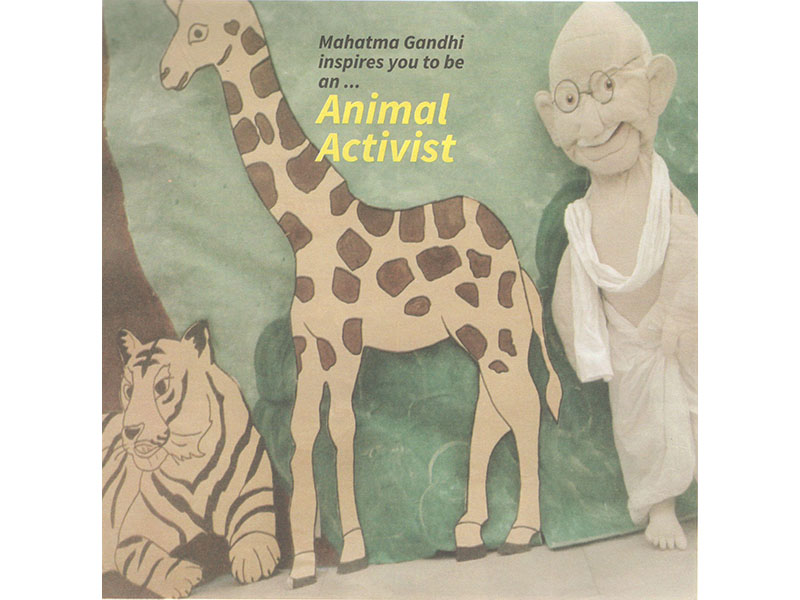 “The greatness of a nation and its moral progress can be measured by the way in which its animals are treated.” – Mahatma Gandhi
“The greatness of a nation and its moral progress can be measured by the way in which its animals are treated.” – Mahatma Gandhi
Did you know that…
As a child, Mahatma Gandhi was afraid of ghosts, thieves, and snakes. But despite his fears, he was true to his commitment to ‘ahimsa’ (non-violence) and would not hurt animals. At his Sabarmati Ashram, he didn’t allow snakes to be killed, whether poisonous or not. He taught inmates to catch snakes with a rope sack and then release them far away from human habitation.
He believed snakes are guards of agri crops because they clear fields of rats, vermin and pests, helping the growth of healthy harvests. Bapu also believed that snakes attack humans when they are trodden upon or mishandled and that killing a snake is a thoughtless act, as one can’t be sure whether it’s poisonous or harmless.
There’s an oft-told story of how the Mahatma returned from an out-of-town visit to his ashram to find a cobra locked in a cage. Somebody had caged the snake so that children could observe it. Bapu asked for the snake to be released. “I believe that the more helpless a creature the more entitled it is to protection by man, from the cruelty of man.”
From Mahatma Gandhi, you can learn to love animals and perhaps choose to qualify as an animal activist. Many career options involve researching and caring for animals.
Bapu taught us that everyone has fears, but we should not let our fears control us. Instead, learn to confront and overcome them. Children fear ghosts, strangers, animals, insects etc, but with help from adults, they can overcome them. For instance, some children are scared of shadows. Adults can explain the science behind shadows to children through a simple experiment.
Take a torch and an animal/bird/insect shape cut-out of cardboard paper. Hold the cutout in one hand and torch in the other. Sit facing a plain wall or sheet of cloth, switch off all lights, put on the torch, and hold up the animal cut-out in front of the torch. When you move the torch closer to the cut-out, the shadow gets bigger. And if you shine the light from under the animal, the shadow gets taller. This is because shadows are made where the light from the sun or lamp cannot reach. When light cannot pass through an object, a shadow appears opposite the light source. Moreover, adults can teach children shadow art and shadow puppetry.
If you like the idea of becoming an Animal Activist, here are some career options you could explore:
- Veterinarian. Doctors to animals, vets clinically treat and cure animals suffering injury and disease.
- Dog trainer. Trains and guides dogs and teaches their owners how to work with them.
- Marine biologist. Marine biology is the study of marine organisms, their behavior and interaction with the environment. Marine biologists study biological oceanography and the associated fields of chemical, physical, and geological oceanography.
- Habitat specialist. A habitat specialist is a zoologist who designs and builds homes for animals e.g. zoos.
- Zoologist. A zoologist studies the behavior, physiology, classification and habitats of animals.
- Marine ecologist. A marine ecologist studies ocean animals and their interaction with the environment and other creatures.























